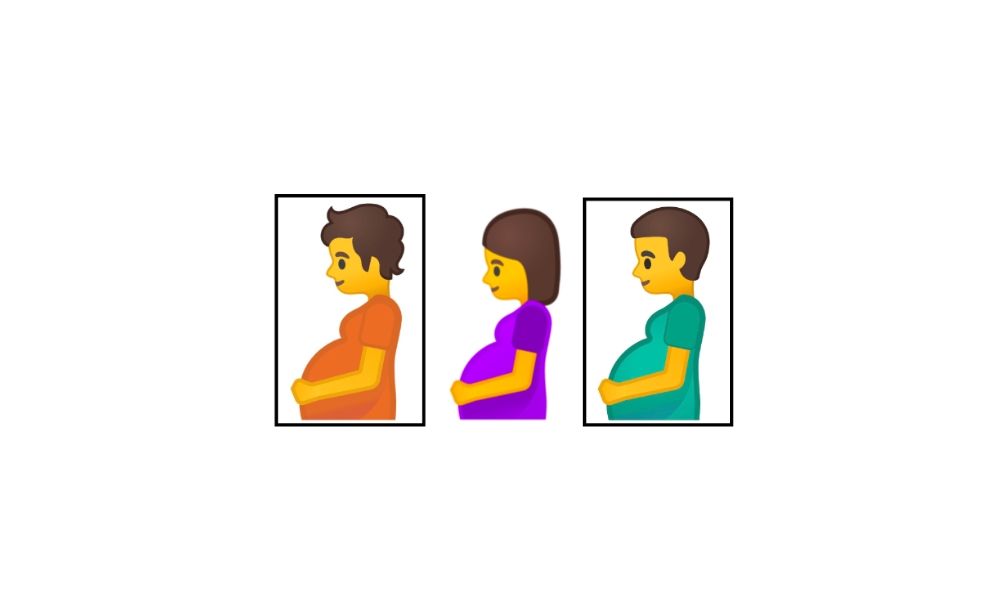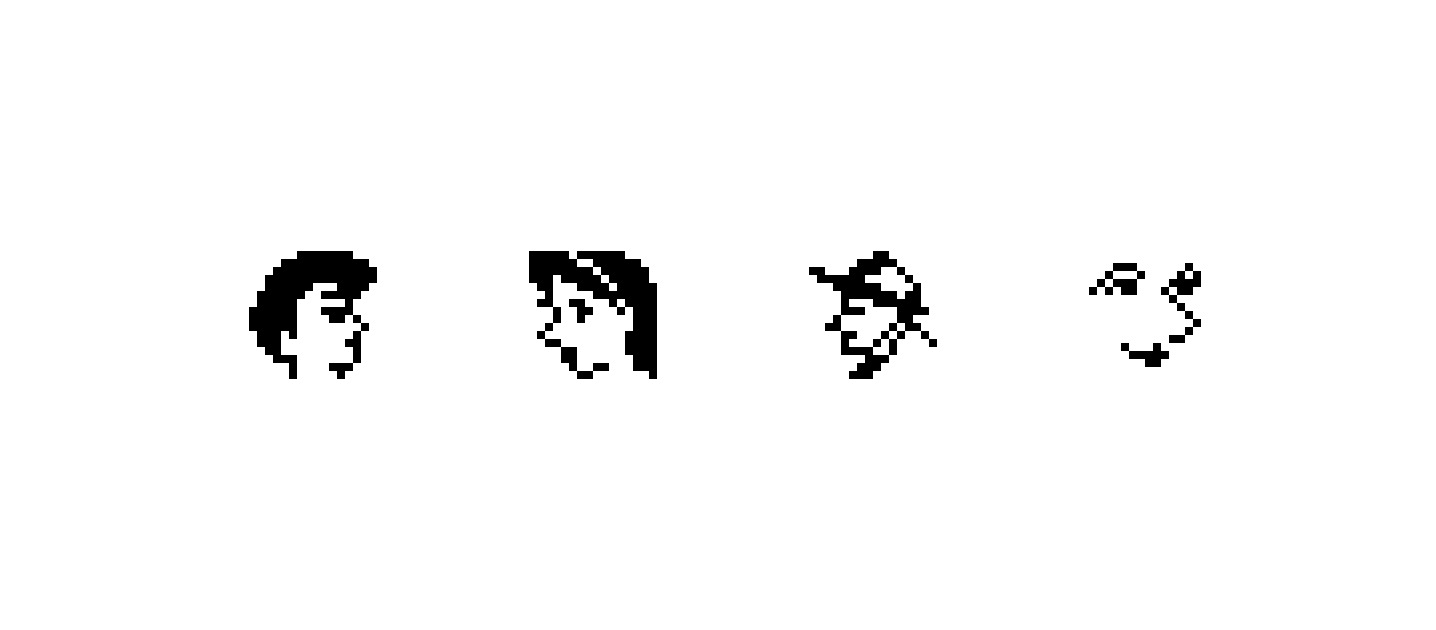Why Is There a Pregnant Man Emoji?

Two new emojis have been welcomed into the world: Pregnant Man and Pregnant Person. They join 🤰 Pregnant Woman, which has been an emoji since 2016.
Released this week by the Unicode Consortium as part of Emoji 14.0, the new pregnancy options may be used for representation by trans men, non-binary people, or women with short hair—though, of course, use of these emojis is not limited to these groups.

Among the potential uses of Pregnant Man and Pregnant Person is also a tongue-in-cheek way to display a food baby, a very full stomach caused by eating a large meal.
There's no one right or wrong way to use an emoji, and the addition of these new emojis reflect an ongoing effort to standardize the options available on the emoji keyboard, making it more consistent and inclusive at the same time.
As always, the meaning of an emoji lies in the context in which it is used, and these are no different.
So what prompted these new additions? There's always a backstory.
Did Emojis Always Have Gender?
The original Japanese emoji sets from the late 1990s had only a few human emojis, all of which were far more abstract and open to interpretation than the ones we have today.
The earliest emoji set on record is from 1997 and appeared on devices from the Japanese carrier SoftBank. It contains four explicitly gendered emojis: Boy, Girl, Man, and Woman. The more well-known emoji set from Docomo in 1999 had even fewer references to gender, with the concept being limited to restroom symbols.

While gender did exist in the earliest emojis, SoftBank's Woman design is just eyes, nose, and a mouth. A design like that could represent a wide variety of people beyond women (as could Google’s now-retired blobs).
As more emojis are added, each individual emoji tends to move away from abstraction and into specificity. This is exactly what has happened with the human emojis over the last two decades.

By the time the Unicode Consortium released their first emoji codepoints in October 2010, there were 44 emojis commonly displayed as humans in the set, and more have been added in the years since.
How Has Unicode Treated Gender?
As new human emojis have been released, Unicode has made an effort to be inclusive with gender, especially in recent years. The approach has varied depending on the situation, though the general goal is to standardize inconsistencies in legacy decisions.
In some cases Unicode has added gender variants of an emoji years after the original emoji was released. Pregnant Man and Pregnant Person fall into this category. So do 🤶 Mrs Claus and 🧑🎄 Mx Claus, added in 2016 and 2020 respectively (🎅 Santa Claus was included in Unicode’s first ever release of emoji codepoints).
In cases where a gender was not at first specified in a human emoji, adding gender variants sometimes involves changing the name of the codepoint. Because the dancer emoji was originally ungendered (it was simply called 'Dancer'), platforms had very different interpretations of this emoji when it was introduced. Designs ranged from a woman in a red dress doing the flamenco to a man in a suit doing the disco to a silhouette of a person dancing.

In 2016, the dancer emoji was renamed 💃 Woman Dancing, and 🕺 Man Dancing was added to disambiguate the two. By 2018 the 💃 Woman Dancing designs across platforms had converged.
What Are Gender-Inclusive Emojis?
In 2019 the Unicode Emoji Subcommittee established priorities to help improve emoji gender representation. The goal outlined by Unicode is to have Person, Woman, and Man representations of all people emojis with gender. The Person emojis are intended to be gender-inclusive. The Unicode Consortium explains:
“Gender-inclusive” emoji, such as adult, are intended to function as the gender equivalent of the neutral skin tone. Gender-inclusive emoji representations are not intended to represent only people with non-binary gender identity or presentation; rather they are meant to be truly inclusive in the sense that they are meant to be unmarked or ambiguous as to gender presentation.

Just as Woman emojis don’t represent all women and Man emojis don’t represent all men, Person emojis are an imperfect tool for representing all genders. Gender is not a haircut or an outfit. Emoji codepoints lack the nuance that exists in individuals. Accepting this as a limitation of emojis in general, Unicode’s goal is to have more people feel represented via emojis.
Why Is There a Pregnant Man Emoji?
This brings us back to Pregnant Man and Pregnant Person. These emojis have been approved to make the emoji keyboard more consistent and gender inclusive, in line with the same steps we saw for other emojis in recent years.
Part of making emojis more consistent is in the naming conventions. Unicode now tends to opt for more descriptive names for emojis to avoid divergent interpretations by designers across platforms. In her newsletter about the Emoji 14.0 release, chair of the Unicode Emoji Subcommittee Jennifer Daniel, explains: "If the existing 'pregnant woman' had been named 'woman with swollen belly' these new emoji would’ve followed suit." Had 🤰 Pregnant Woman been approved in 2016 under a more descriptive name, we might've been talking about the addition of “Man with Swollen Belly” and “Person with Swollen Belly” today instead of Pregnant Man and Pregnant Person. This is all part of the messiness of standardizing a standard.
Naming conventions aside, men can be pregnant. This applies to the real world (e.g., trans men) and to fictional universes (e.g., Arnold Schwarzenegger in Junior and Lil Nas X's promotional materials for his album “Montero.”) People of any gender can be pregnant too. Now there are emojis to represent this.
“MONTERO” THE ALBUM
— MONTERO 🦋 (@LilNasX) August 30, 2021
OUT SEPTEMBER 17, 2021 pic.twitter.com/M7qVwV1uOu
These pregnancy options arrive on the majority of emoji keyboards in late 2021 or early 2022. When they do, it will be in your hands whether or not to use them. Until then, we remain expectant.
